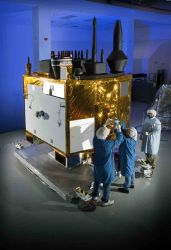Hexagon Launches Acquisition of NovAtel Shares
Swedish technology group Hexagon AB, which acquired Leica Geosystems in 2005, launched its tender offer to acquire all the issued and outstanding common shares of NovAtel Inc., a Calgary, Alberta, Canada–based developer and manufacturer of OEM GNSS and related products, at a price per share of US$50 cash.
By Glen Gibbons



